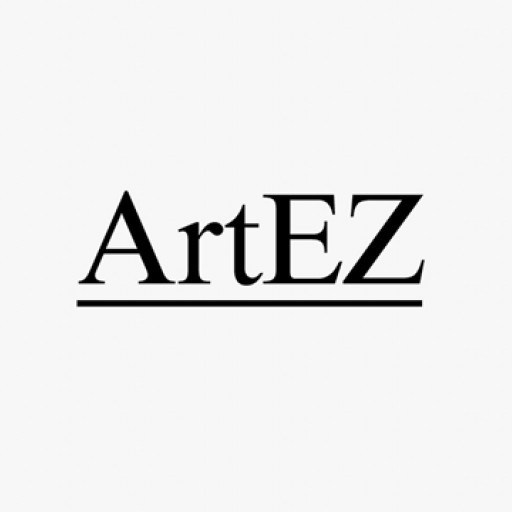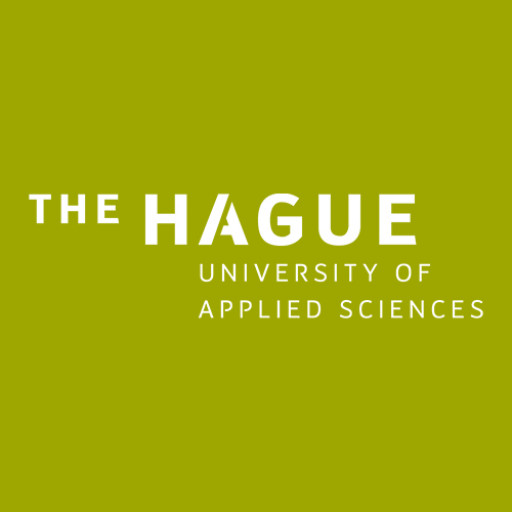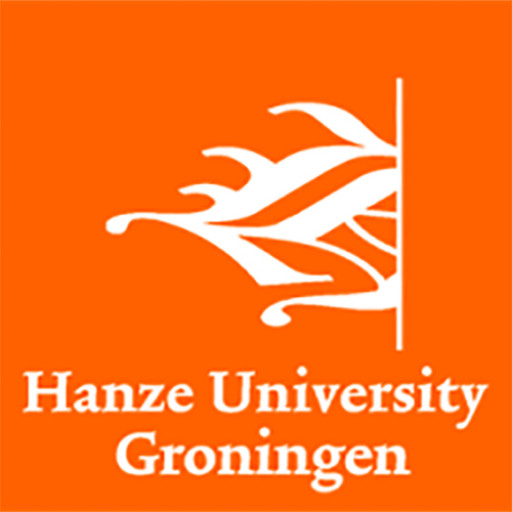Photos of university / #artezhogeschool
Interaction Design at ArtEZ University of Arts is a forward-thinking, innovative program that prepares students to become versatile designers capable of creating engaging, user-centered digital experiences. The curriculum integrates principles of design, technology, psychology, and communication to equip students with a comprehensive skill set necessary for solving complex interaction challenges across various digital platforms. Throughout the program, students explore human-computer interaction, user experience (UX) and user interface (UI) design, prototyping, and usability testing, fostering a deep understanding of how to develop intuitive and accessible digital products. Emphasizing a creative and experimental approach, the program encourages students to rethink traditional design paradigms and develop innovative solutions that enhance user engagement and satisfaction. The multidisciplinary environment at ArtEZ ensures that students collaborate across different art forms and fields, enriching their perspective and ability to work in diverse teams. The program also offers opportunities for practical application through internships, collaborative projects with industry partners, and participation in real-world case studies. Students learn to utilize the latest design tools and technologies, including interactive media, digital fabrication, and coding, ensuring they are well-prepared for the rapidly evolving digital landscape. Graduates of the Interaction Design program are equipped to pursue careers in a variety of sectors, including app and web design, game development, digital product innovation, service design, and digital consultancy. The program’s focus on both theoretical understanding and hands-on practice ensures that students develop a balanced skill set that combines conceptual thinking with technical expertise. ArtEZ’s vibrant, creative community provides an inspiring environment where students can experiment, receive feedback, and refine their ideas. As part of their education, students are encouraged to engage critically with contemporary issues related to technology and society, fostering responsible and ethical design practices. Ultimately, the Interaction Design program at ArtEZ aims to cultivate innovative designers who can shape the future of digital interaction and contribute meaningfully to the digital economy and society at large.
Interaction Design at ArtEZ University of the Arts offers a comprehensive and innovative educational experience focused on the creative and technical aspects of designing engaging, user-centered digital interactions. The programme is designed to equip students with the skills necessary to develop innovative interfaces, interactive media, and digital experiences across various platforms such as websites, mobile applications, and immersive environments. Throughout the programme, students explore the core principles of interaction design, including usability, user experience (UX), visual communication, and human-centered design. They engage in hands-on projects that challenge them to solve real-world problems by designing intuitive and aesthetically compelling digital products.
The curriculum combines theoretical knowledge with practical application, emphasizing design research, prototyping, and user testing to ensure that students can evaluate and refine their creations effectively. Students are encouraged to experiment with new technologies such as augmented reality (AR), virtual reality (VR), and emerging interface paradigms to push the boundaries of interaction design. Collaboration is a key element of the programme, fostering teamwork skills and providing opportunities to work with peers from diverse backgrounds, including graphic design, digital media, and technology.
ArtEZ's Interaction Design programme also emphasizes reflection and critical thinking, encouraging students to consider the social, ethical, and cultural implications of their designs. They are trained to understand the role of interaction design in shaping society and to develop responsible, inclusive, and sustainable digital experiences. The programme prepares graduates for diverse careers in industries such as game design, UX/UI design, digital innovation, and technological entrepreneurship. State-of-the-art facilities, including dedicated labs and technological resources, support students’ creative process and experimentation.
Graduates of the Interaction Design programme at ArtEZ are equipped to become future leaders in the digital industry, capable of designing meaningful, user-friendly, and innovative digital interactions that enhance human experience. The programme's focus on creativity, technological proficiency, and social awareness ensures students are ready to meet the challenges of an ever-evolving digital landscape and contribute positively to society through design.
Program requirements for the Bachelor of Arts in Interaction Design at ArtEZ University of the Arts include a formal application process requiring proof of prior education such as a diploma at the required level and a portfolio demonstrating creative and technical skills relevant to interaction design. Prospective students must submit their application through the official ArtEZ admissions portal within the specified deadlines. A motivation letter outlining the applicant's interest in interaction design, relevant experience, and career objectives is also necessary. Proficiency in English must be demonstrated through standardized tests like IELTS or TOEFL, as the program is conducted entirely in English. Applicants may be required to participate in an interview or assessment day to evaluate their motivation, creativity, and technical aptitude. Prior knowledge of design software and basic programming principles is advantageous but not mandatory; however, a strong foundation in visual communication and problem-solving skills is expected. The program also emphasizes interdisciplinary collaboration, so experience in related fields such as graphic design, digital media, or computer science can strengthen an application. Applicants should be prepared to engage with a curriculum that combines theoretical coursework, practical projects, and teamwork exercises designed to foster innovation and user-centered design. Admission is competitive, and meeting the minimum requirements does not guarantee acceptance. Candidates are advised to review the specific eligibility criteria and prepare all documentation thoroughly before applying. Additionally, students are expected to possess a genuine interest in emerging digital technologies and a proactive approach to learning and experimentation. Once admitted, students must complete mandatory assessments, maintain satisfactory academic progress, and participate actively in workshops, internships, and final projects. Transfer students from similar programs may be considered on an individual basis and must provide detailed transcripts and course descriptions for evaluation. Overall, the program aims to select motivated, talented individuals committed to advancing the field of interaction design through innovative thinking and ethical practices.
Financing studies in the Interaction Design program at ArtEZ University of the Arts can be approached through various channels. International students are encouraged to explore scholarship opportunities provided by the Dutch government, ArtEZ University of the Arts, and other granting bodies dedicated to supporting higher education. For students from the Netherlands or European Union countries, the tuition fees are typically covered under the statutory tuition fee, and there are options for student loans and grants through the DUO (Dienst Uitvoering Onderwijs) system, which can assist with living expenses and tuition costs. Non-EU students should be prepared to pay institutional tuition fees, which are higher than those for EU students, but there may still be scholarship options available based on merit or need. ArtEZ offers several scholarships and financial support opportunities to international students, which are competitive and require an application process. Additionally, students are encouraged to seek external funding sources, including private foundations and international scholarship programs that support design and arts studies.
Students can also consider part-time work opportunities within the Netherlands, subject to visa restrictions, to help cover living expenses. The university provides guidance on work permits and legal employment for international students. It's important to plan a comprehensive financial strategy before commencing studies, considering tuition fees, housing, insurance, living expenses, study materials, and other personal costs. The university's international office can assist with information about scholarships, financial aid options, visa procedures, and budgeting advice. Moreover, students can explore government loans available in their home countries to finance their education abroad, if applicable. Overall, the financing of studies in Interaction Design at ArtEZ requires proactive planning and utilisation of multiple funding sources to ensure a smooth educational experience.
Interaction Design at ArtEZ University of the Arts is a multidisciplinary program that focuses on the development of innovative digital and physical interfaces, user-centered design, and creating meaningful interactions between humans and technology. The program emphasizes creativity, technical skills, and conceptual thinking, preparing students to meet the challenges of designing experiences in a rapidly evolving digital landscape. Throughout the course, students learn to combine design principles, programming, and research methods to develop prototypes, applications, and interactive environments. The curriculum includes modules on visual communication, user experience design, human-computer interaction, and emerging technologies such as virtual reality, augmented reality, and wearable devices.
Students engage in a variety of practical projects and collaborative work with industry partners, fostering an entrepreneurial mindset and real-world problem-solving skills. The program aims to nurture innovative designers who can critically analyze societal issues through their creative work and contribute to the development of sustainable, accessible, and inclusive digital experiences. ArtEZ’s approach integrates theory and practice, encouraging experimentation and the exploration of new design paradigms. The interaction design program prepares graduates for roles in diverse fields including digital product development, UX/UI design, game design, and interactive media in both local and international markets. The university's strong industry connections and focus on professional development ensure students are well-equipped for a successful career in the dynamic and interdisciplinary world of interaction design.




